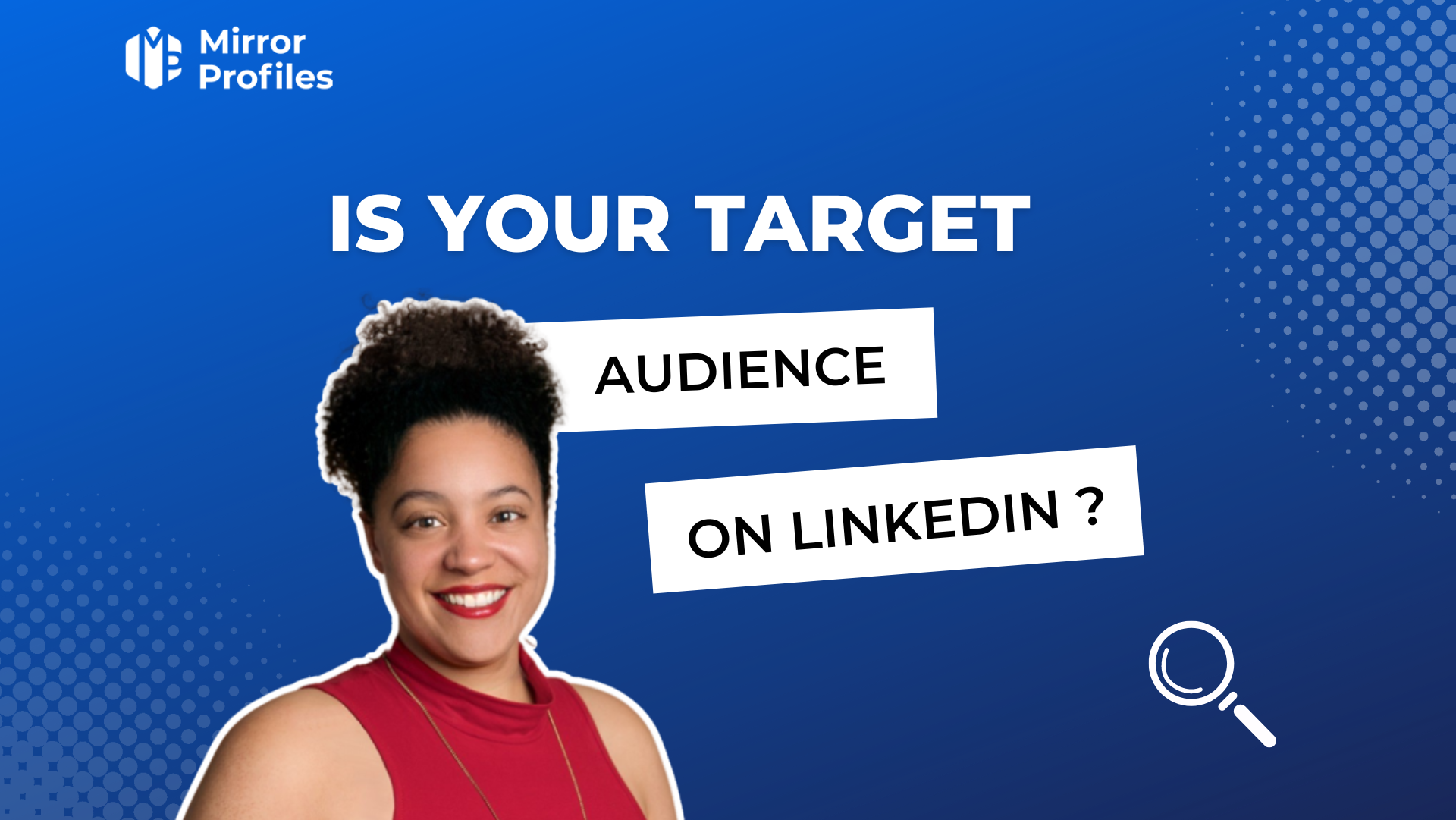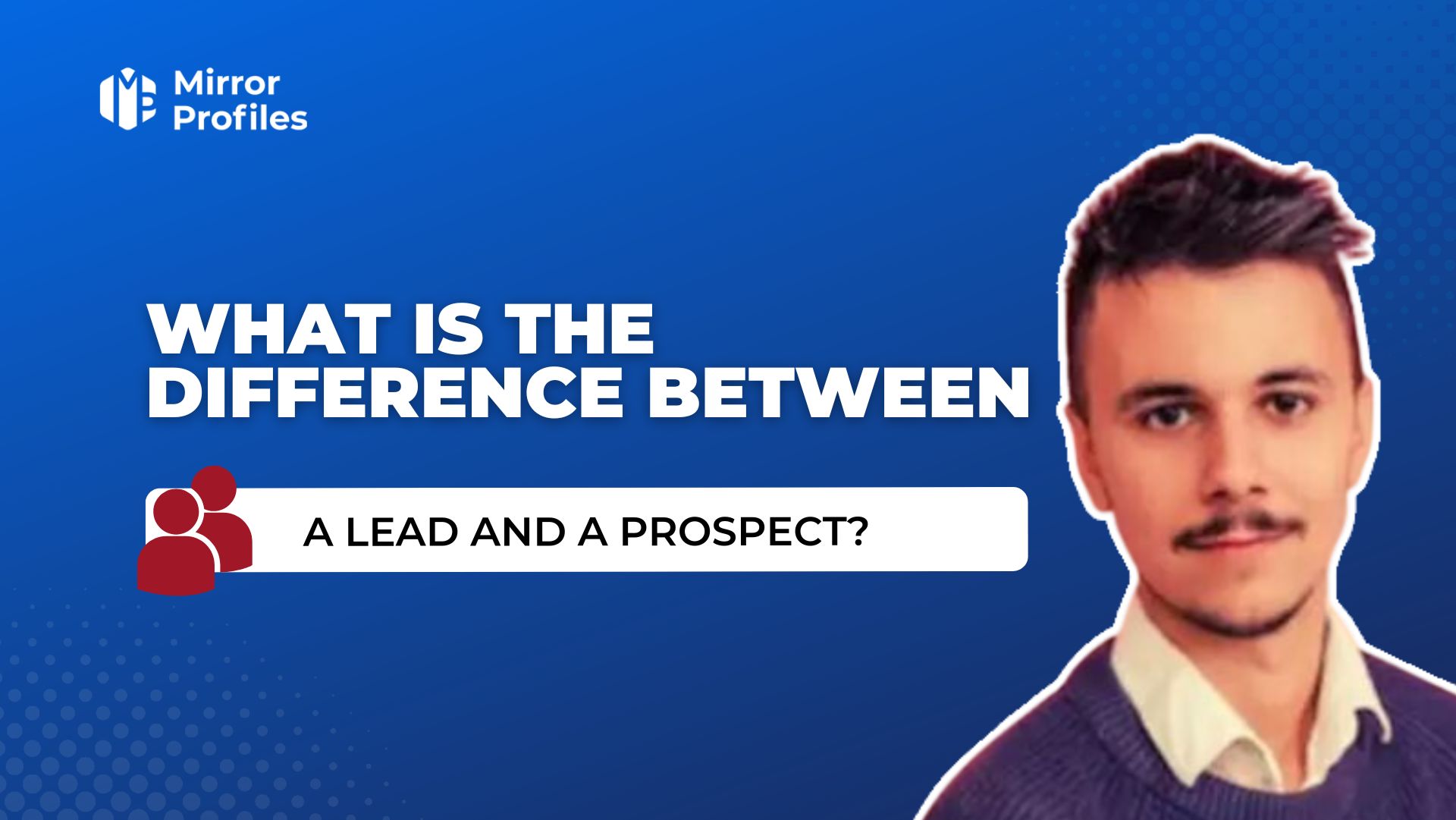Introduction
Growing your business is a constant quest for every entrepreneur. The key? Prospecting. Whether it’s inbound marketing such as SEO and SEA, or outbound marketing such as outbound prospecting and networking, the key questions are always the same: Where are my prospects? Which platforms do they use the most? Which acquisition channel should you choose to contact them? In this article, we’ll focus on LinkedIn. How do you know if your prospects are on LinkedIn? That’s what we’re going to find out.
Creating your persona or KPI
First, you need to establish your personas, identifying your main prospect categories and target sectors. Although this is a crucial task, don’t dwell on it for too long. It will be essential to move quickly into action to validate your assertions.
What is a persona?
A Persona is an imaginary figure symbolizing a target group. In the course of its creation, this figure is given various attributes that complete its profile, reflecting the specific characteristics of the target group. These features enable teams to design usage scenarios for a product or service, and determine a positioning, promotion or distribution strategy. For each persona, the aim is to get under their skin, form a mental image of them and understand how they think and act, so as to ultimately find a solution to their problems. Once you’ve internalized their profile, all you have to do is identify an answer to their problems and offer them your products.
What is an ICP?
ICP, or Ideal Customer Profile, is a term used in marketing to describe a fictitious profile that represents the perfect customer for a given product or service. This profile is based on specific characteristics such as company size, industry, geographical location, budget, technological needs, challenges encountered, etc. A KPI is the conceptual representation of a fictitious company that benefits greatly from your product or service, and in return brings substantial value to your company; it’s the customer who costs the least to acquire, is loyal, has a high customer lifetime value (i.e. the value the customer brings over his or her lifetime as a customer) and becomes a true promoter of your brand.
What are the differences between a persona and a KPI?
The difference between a persona and a KPI is like comparing a detailed portrait with a line drawing. The persona is a detailed profile, while the KPI focuses on the company as a whole.
The persona is a detailed analysis that creates a fictitious profile of a typical customer. For example, if you sell management software for small businesses, your persona might be “Sophie, the 30-40 year-old manager of a clothing boutique, looking for a solution to simplify her inventory and accounting management.” The persona encompasses Sophie’s specific needs, goals and challenges, allowing us to create marketing messages that resonate with her and other customers with similar needs.
On the other hand, the ICP (Ideal Customer Profile) is a broader, more focused description of the ideal company to which you should sell your products or services. Continuing the previous example, the KPI could be “Small businesses in the retail sector, located in urban areas, with annual sales of between €100,000 and €500,000, and in urgent need of digitizing their business processes.” KPI focuses on the attributes and needs of the company as a whole, rather than the individuals within it, enabling you to align your sales and marketing efforts with the accounts most likely to be converted into customers.
Example of a persona for MirrorProfiles :
Creating Linkedin targets and quantifying the pool
Based on your Ideal Customer Profile (ICP), it’s a good idea to segment this information into different categories to define your targets on Linkedin.
It’s important to note that you’ll need the Sales Navigator tool to develop your Linkedin targets. You wonder why? You’ll find all the details in this explanatory article. What’s more, you need to be familiar with all the filters available to you.
For company-related filters :

For lead filters :

Once you’ve prepared all this information, it’s up to you to convert the details contained in your Ideal Customer Profile (ICP) into Linkedin targets. For some elements, such as job title or company size, the task is straightforward, but for others it can be more complicated. This is particularly the case for sales (CA), as Linkedin focuses mainly on human data and is less efficient at managing other types of data, particularly financial data.
To convert a turnover into a Linkedin filter, it can be useful to search for sector-specific information. For example, a company selling physical products can easily achieve sales of 1 million with a team of 11 to 50 people. If you’re targeting service companies generating over 4 million in sales, you’ll need to associate your “Sector” filter with a company size of between 50 and 200 people.
Need help? Contact Stepward, the best outbound prospecting agency!
Once you’ve done this, just look at the number of results:
It’s important to bear in mind that, on average, a 10-15% margin is needed to estimate your pipe correctly. If the number displayed is 10,000 results, your prospecting pool will be between 9,000 and 11,000 people, which is sufficient for prospecting.
In conclusion, if the number of results exceeds 2,000, your target is present on Linkedin. Below this threshold, manual prospecting may be more appropriate. Beyond that, automation becomes necessary:
How can I boost my company’s growth through automation?
Now that we’ve started to define our Linkedin targets and confirmed that certain elements of our KPI can be found on this platform, it’s time to move on to the next step: prospecting. The first task concerns data.
How to build databases for Linkedin prospecting
To transfer information from Linkedin to your CRM, you’ll need a scraping tool. Linkedin doesn’t allow direct downloading of their data, and copying and pasting more than 1,000 times doesn’t make much sense. Here is a non-exhaustive list of simple scraping tools you can use on Linkedin:
- Captain Data: This is a non-programming automation platform that scours the web to extract data for you. The company specializes in data extraction, enrichment and automation. It can therefore extract information from Sales Navigator and export it in CSV format for your prospecting.

Here’s an example of what you can achieve with Captain Data, a tool used by outbound prospecting agency Stepward.
The most important data to retrieve are :
- company_name
- company_url
- connection_degree
- current_company
- first_name
- last_name
- full_name
- headline
- id
- job_title
- linkedin_profile_url
- rental
- sales_navigator_profile_id
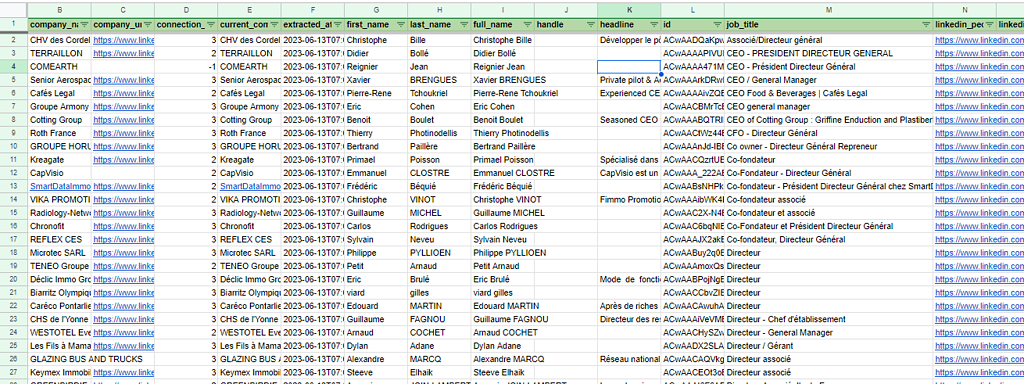
- Phantombuster is a SaaS platform that any developer can use to add an API to any website. It also scrapes Sales Navigator searches for your prospecting.
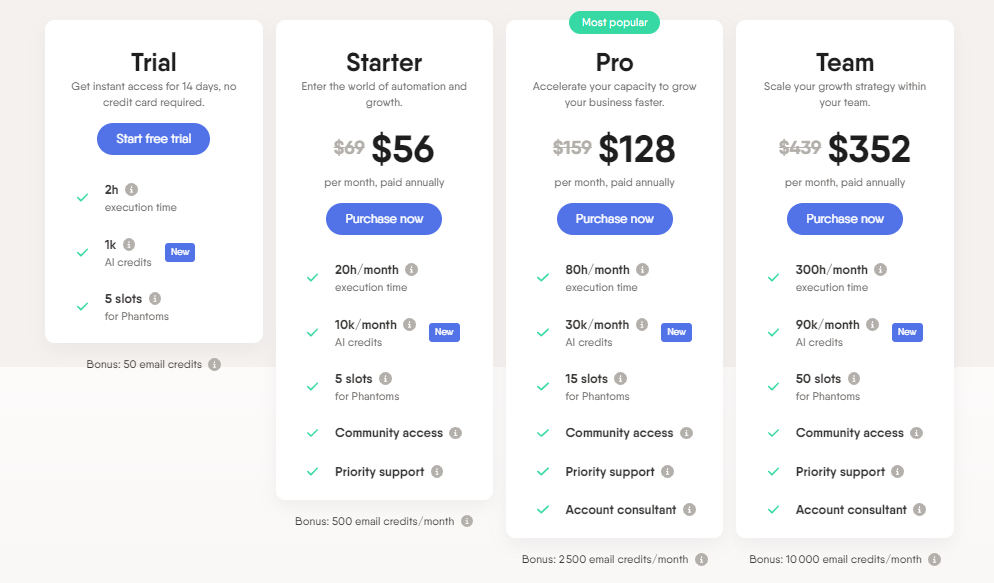
- Evaboot: This is an intelligent LinkedIn Sales Navigator scraping tool that extracts, cleans and enriches any LinkedIn Sales Navigator search in one click.
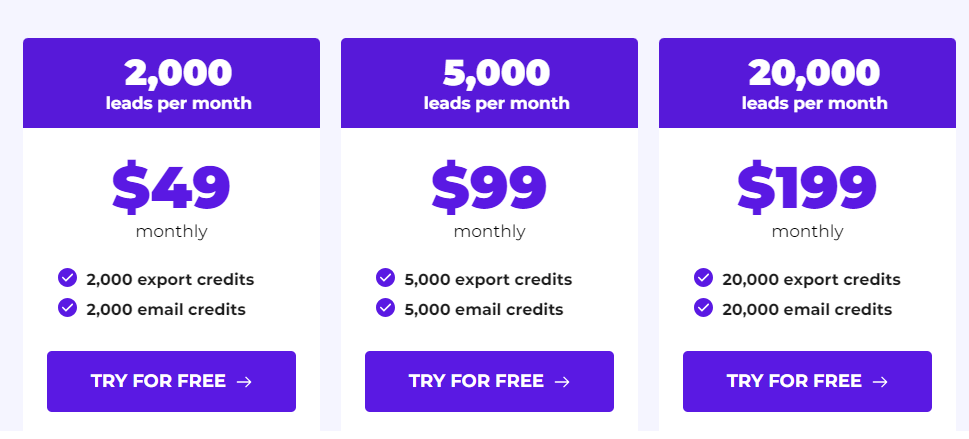
With all this data in hand, it’s now up to you to take action!
In conclusion
Prospecting on LinkedIn is an essential dimension of modern business strategy. Identifying your targets is essential before you set out to reach them. The persona and KPI are then there to lead you to the right targets. Once your analysis is complete, you’ll be able to reach your precise targets thanks to sophisticated scraping tools and well-defined analysis methods.
To find out more about how to prospect these targets and make effective use of the data retrieved, you can read this article:
Sales Machine Linkedin
. It details the techniques, tools and tips that will help you turn this information into real sales opportunities.
What’s more, this approach is not limited to LinkedIn. It also opens the door to emailing, another powerful channel for prospecting. Integrating these two methods can create a synergy that increases the reach and effectiveness of your prospecting efforts. Whether it’s automating the sending of emails or segmenting your lists, emailing offers many possibilities for reaching your targets in a more personalized and engaging way.
In short, by combining the power of LinkedIn with other prospecting channels such as emailing, and relying on the right tools and techniques, you can build a robust and responsive sales machine. This will not only help you find new potential customers, but also convert them into loyal customers, contributing to the growth and success of your business.

